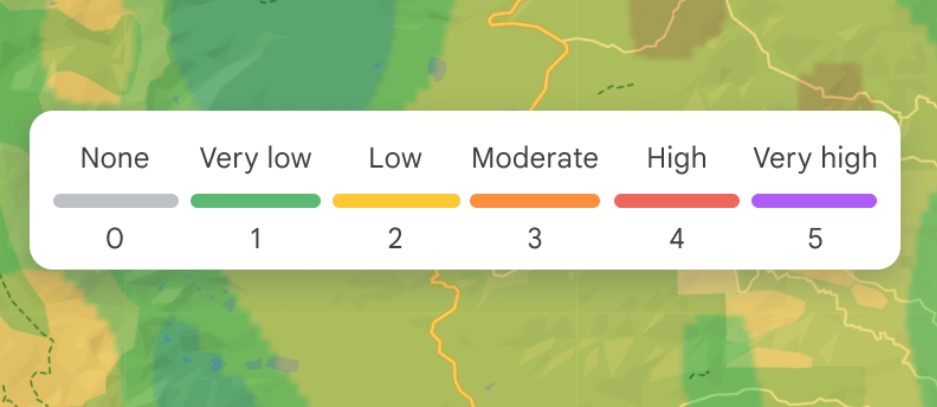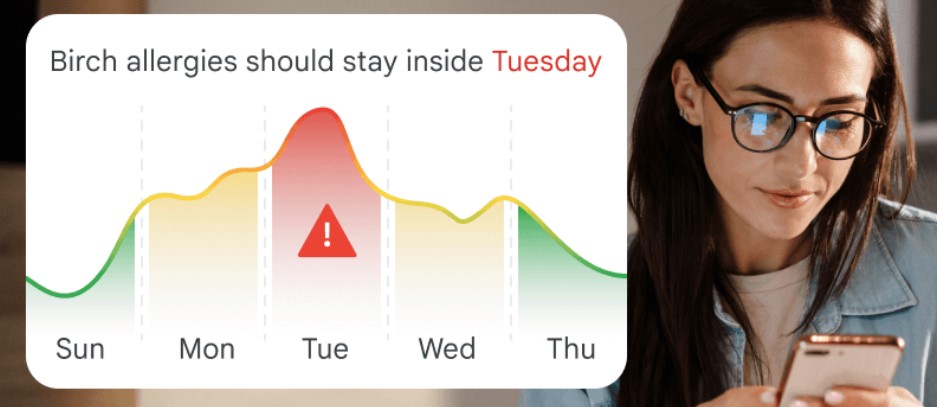
A significant portion of the global population, approximately one-third, experiences seasonal allergies, such as allergic rhinitis. Climate change has led to longer and more severe pollen seasons, prompting businesses to offer more than just medications to pollen-sensitive individuals. To enhance customer engagement and establish themselves as valuable resources for allergy sufferers, businesses must provide reliable and actionable information on worldwide pollen levels. Google steps in with a new Pollen API – the third, after Air Quality and Solar API – addition to Google’s environment suite. It enables businesses to share pertinent pollen information to boost brand loyalty and user engagement.
The power of Google’s Pollen API
The Pollen API equips users to minimize allergenic pollen exposure and make informed daily choices by offering:
Traditional pollen reporting is labor-intensive, often resulting in delayed information. For those sensitive to pollen, it’s crucial to know which plants trigger their allergies. To provide precise, localized risk indicators, the Pollen API distinguishes between grass, weed, and tree pollen produced by various plant species. It employs a model that calculates seasonal and daily pollen grain amounts on a 1×1 km2 grid across 65+ countries. It supports up to a 5-day forecast, covers three plant types, and includes 15 plant species. The model utilizes diverse data sources, such as land cover, climatological data, annual pollen production per plant, and more to provide accurate local pollen level predictions.
Key features
Global universal pollen index
A global index for comparing pollen levels across different areas.


Species information
Detailed information for tree, grass, and weed pollen types, with up to 15 species around the world.
Heatmaps
Colorful visual representations of pollen levels on a map.


Pollen forecast
A daily pollen forecast for a specific place for up to 5 days.
Allergen information
Display comprehensive data, including type, family, season, shape, color, cross-reaction, and photos.


Personalized recommendations
Tips about how to cope with different allergens.
How can businesses leverage the Pollen API?
The Pollen API opens doors for businesses to provide personalized, location-specific, and plant-specific pollen data in real time. This empowers users to make healthier decisions and unlocks opportunities for business growth. Key benefits include:
- Assisting Allergy Sufferers: by optimizing medication use, helping users choose ideal outdoor activity times, and maintaining indoor spaces free of pollen.
- Timely Alerts: deliver timely pollen information to users through digital channels like social media, email, and website alerts, enabling them to prepare for changes in pollen levels and make informed choices.
- Interactive Visuals: create interactive visual experiences that convey granular pollen information, enhancing user engagement, fostering brand loyalty, and setting your brand apart from the competition.
What types of businesses can particularly benefit from the Pollen API?
Allergy service providers
Use personalized pollen data to optimize supply management, conduct market analysis, and inform product roadmaps based on consumer trends.
Health-related businesses
Leverage geolocated pollen data to deliver health-focused alerts and recommendations tailored to individual needs and environments, deepening user engagement with your products and brand.
Companion apps
Provide multi-day pollen forecasts to enhance user value and open up new revenue streams by promoting healthier lifestyle choices, such as improved travel planning, vacations, and work arrangements.
We’re excited to witness innovative solutions using the Pollen API in different business models. The API is currently in Preview and available to existing Google Maps Platform customers. To get started, visit Google’s Pollen API webpage.
If you’d like to consult your idea for implementing the new API with our Google experts, contact us! We’ll be happy to help you choose the best solution for your business.
